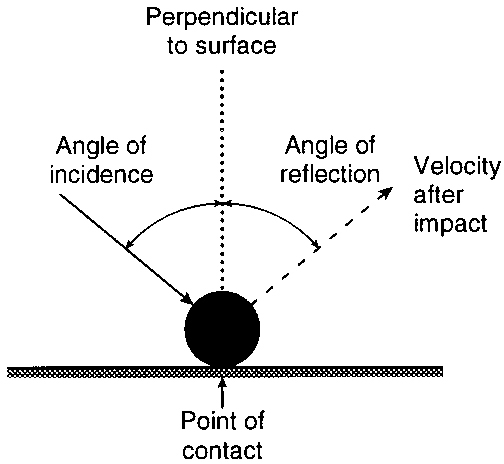 "Watch the ball" along with "move your feet" are two staple pieces of advice that a player is bound to hear throughout his/her career. Obviously, since one of the centerpieces of our sport is to hit a moving object, both components must be mastered in order to succeed. Although movement has been covered ad nauseum by tennis writers, less ink has been devoted to the concept of watching the ball. Here are CAtennis.com's thoughts on the subject:
"Watch the ball" along with "move your feet" are two staple pieces of advice that a player is bound to hear throughout his/her career. Obviously, since one of the centerpieces of our sport is to hit a moving object, both components must be mastered in order to succeed. Although movement has been covered ad nauseum by tennis writers, less ink has been devoted to the concept of watching the ball. Here are CAtennis.com's thoughts on the subject:
1. Watch the ball so that you can pick up the speed of the ball. Remember that light travels faster than sound. Don't rely on the cracking sound of the ball to inform you that the opponent has hit a hard and heavy shot (or, conversely, a soft ball). Pick up the necessary information from your opponent's preparation and the velocity at which the ball is leaving your opponent's string bed. This will enable you to prepare early and adequately. The ball will slow down somewhat after touching the ground - due to friction - but your best guess at anticipating the speed is to analyze the trajectory prior to the bounce.
2. Watch the ball so that you can pick up the spin of the ball. In addition to hitting fabulous shots, great players are also known for doing the simple things really, really well. They don't overthink or overcomplicate the basics. If the ball comes with underspin, they know how to get (and stay) under and adjust the face of the racket accordingly. If the ball comes with topspin, they know that the speed of the ball prior to the bounce is deceptive - that the ball will bounce and, due to forward rotation, will "explode" forward. Therefore, the high-level players will prepare a smidgeon sooner in order to avoid being jammed by the oncoming ball. As mentioned in a prior article, the ball (whether struck with top- or under-spin) may also come with a slight side-spin which further alters the trajectory of the ball and forces the player to take an extra couple of small adjustment steps.
 3. Watch the ball so that you can anticipate the angle of reflection. The basic physics concept is that when a ray of light strikes a flat surface at a certain angle (angle of incidence) it will reflect at the same angle (angle of reflection or refraction) in the opposit direction (see image to the right). For example, if sunlight hits a mirror at 45degrees, the light will bounce off at 45degrees in the opposite direction. Substitute ball for sunlight and the application is that when the ball arcs and then drops at a certain angle it will bounce, more or less, at the same angle (give or take a couple of degrees due to pace, spin, smootheness of the court, wind, etc). As a player, if you can anticipate the angle of the ball's "reflection", you can adjust - whether with your feet, balance, core and/or racket - your shot. A lot of developing players wait for the ball to bounce in order to prepare. Unless you're playing Criss Angel, there is no magic! The ball will not change trajectory in mid-air (and may only change very slightly after the bounce). Accordingly, if the opponent sends the ball your way in a certain manner (horizontal angle as well as vertical angle), you should be able to determine where and how the ball will bounce even before the ball crosses the net. If you truly watch the ball (as well as the opponent's biomechanics), you will shave precious time off your preparation.
3. Watch the ball so that you can anticipate the angle of reflection. The basic physics concept is that when a ray of light strikes a flat surface at a certain angle (angle of incidence) it will reflect at the same angle (angle of reflection or refraction) in the opposit direction (see image to the right). For example, if sunlight hits a mirror at 45degrees, the light will bounce off at 45degrees in the opposite direction. Substitute ball for sunlight and the application is that when the ball arcs and then drops at a certain angle it will bounce, more or less, at the same angle (give or take a couple of degrees due to pace, spin, smootheness of the court, wind, etc). As a player, if you can anticipate the angle of the ball's "reflection", you can adjust - whether with your feet, balance, core and/or racket - your shot. A lot of developing players wait for the ball to bounce in order to prepare. Unless you're playing Criss Angel, there is no magic! The ball will not change trajectory in mid-air (and may only change very slightly after the bounce). Accordingly, if the opponent sends the ball your way in a certain manner (horizontal angle as well as vertical angle), you should be able to determine where and how the ball will bounce even before the ball crosses the net. If you truly watch the ball (as well as the opponent's biomechanics), you will shave precious time off your preparation.
To assist yourself with watching the ball, try doing the following: right after the opponent (pr practice partner) has contacted the ball, tell yourself (in your mind) "Back" (i.e. racket back). Do you have to take the racket back as you're doing it? Depending on your strokes and the particular circumstances - maybe, maybe not. However, giving yourself this verbal cue will put you - mentally - in the position to prepare a split second sooner. In other words, you will trick your brain (and your eyes) to start watching the ball sooner and with a purpose.